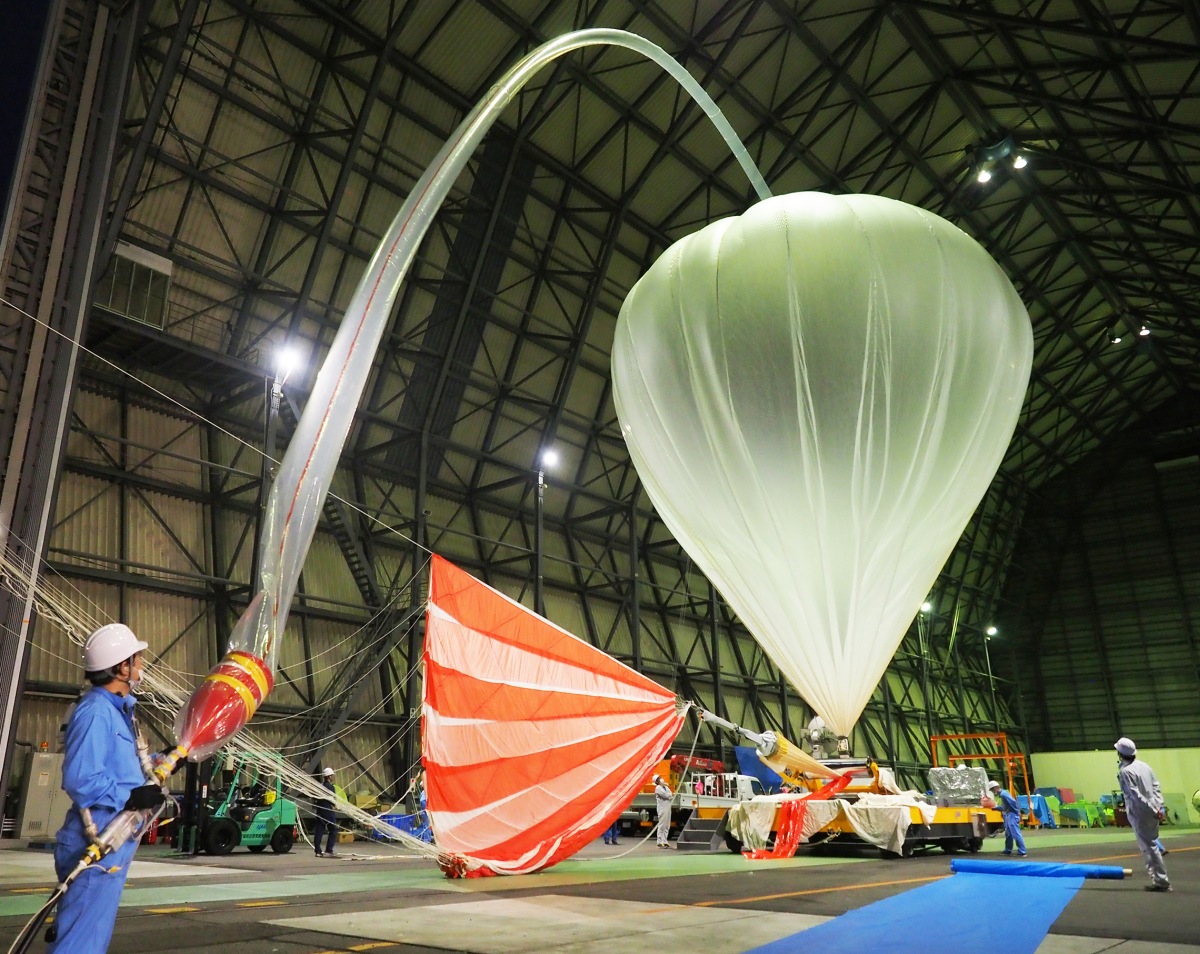Purpose of the flight and payload description
This was a test flight of a super pressure balloon with a volume of 2,000 m3 of new design manufactured by covering the film with a net. The main characteristic of the new balloon is that it have more resistance to over pressure and is lightweight so it could potentially carry a heavy payload during long time.
The purpose of this experiment was to confirm that a series of operations from launch to recovery were possible through the entire flight, and also to evaluate complete deployment and pressure resistance performance in a flight environment.
Details of the balloon flight
Balloon launched on: 7/14/2020 at 3:53 jst
Launch site: Multipurpose Aviation Research Field, Taiki-Cho, Hokkaido, Japan
Balloon launched by: Institute of Space and Astronautical Science (ISAS) / Japan Aerospace Exploration Agency (JAXA)
Balloon manufacturer/size/composition: Super Pressure Balloon 2000 m3
Flight identification number: B20-03
End of flight (L for landing time, W for last contact, otherwise termination time): 7/14/2020 at 4:44 jst
Balloon flight duration (F: time at float only, otherwise total flight time in d:days / h:hours or m:minutes - ): ~ 1 h
Landing site: In the Pacific Ocean, 40 km ESE of Taiki, Japan
The balloon was launched from the Taiki Aerospace Research Field, in Hokkaido, Japan at 3:53 am on Tuesday, July 14, 2020. After released and while ascending the balloon did not rise as expected due to unknown reasons, but it managed to reach a safe zone at sea while maintaining the planned altitude of 10 km. After evaluation was decided to terminate early the mission so at 4:33 am a signal was sent and the balloon and payload fell to the Pacific Ocean while flying 40 km east-southeast of Taiki. Both elements were retrieved by a recovery ship from sea surface at different points near 5:40 am.
External references
- News of the launch ISAS / JAXA website
15502If you consider this website interesting or useful, you can help me to keep it up and running with a small donation to cover the operational costs. Just the equivalent of the price of a cup of coffee helps a lot.


